
Steve and JP at the OVC Companion Animal Hospital nine months post-op from Steve’s bilateral cataract surgery
It’s not hard to see why Steve has been a special part of Jean Paul’s life since he welcomed him into his home as a puppy. As Steve enters the exam room for his post-operative check-up at the OVC Companion Animal Hospital this past May, the nine-year-old white Labrador Retriever makes his way around the room, as if to say hello to everyone gathered in the Ophthalmology Service. His wagging tail greets Dr. Chantale Pinard as she asks JP how Steve’s been doing since his last visit and prepares to examine him. It’s been nine months since Pinard performed surgery on Steve and she is happy with the progress he’s made.
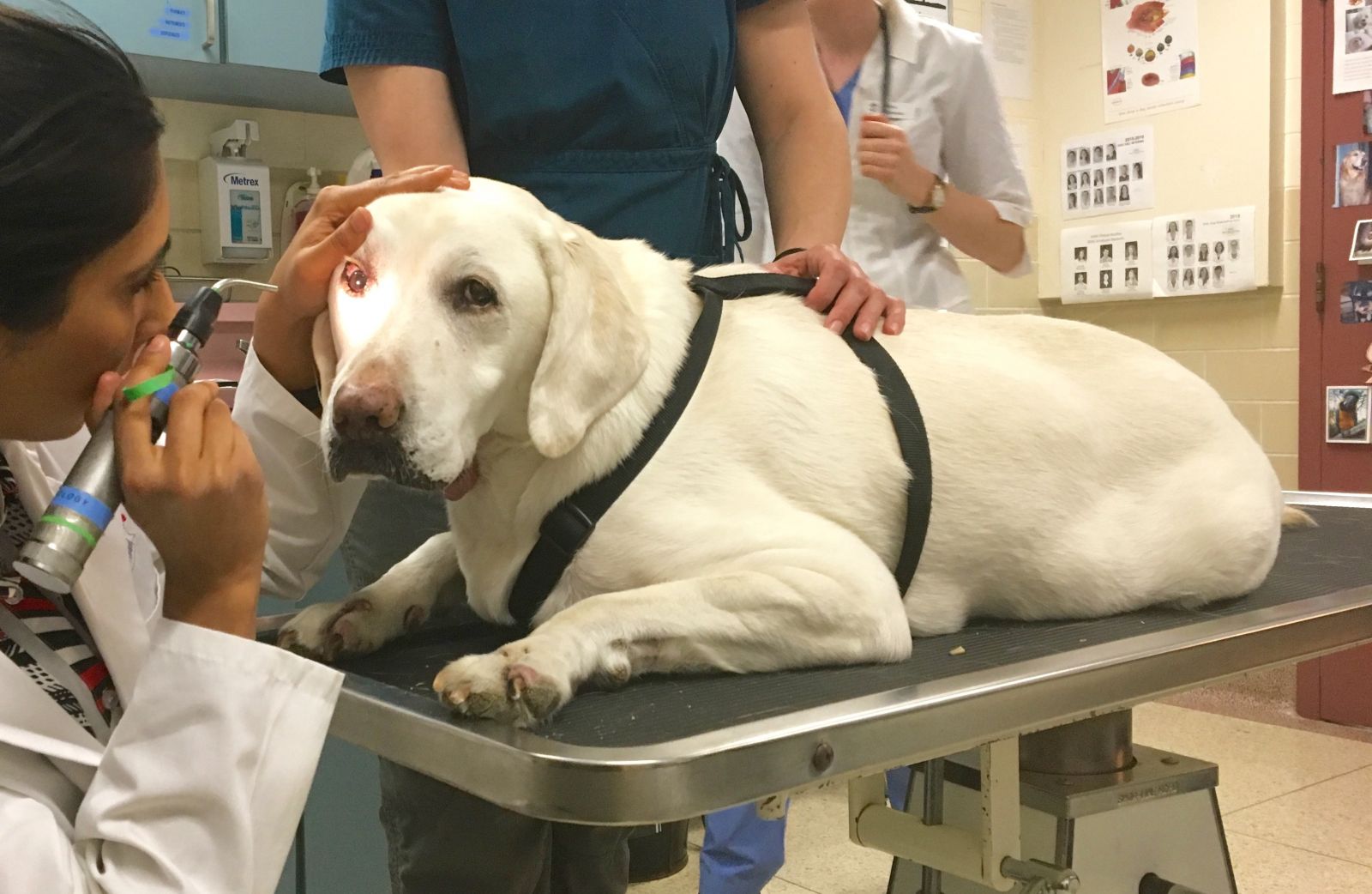
Steve’s eyes are examined by student veterinarian Noreen Sumar under Dr. Chantale Pinard’s supervision
Following a diagnosis of Diabetes mellitus in the summer of 2014, Steve lost the vision in his right eye in December of that year. Two months later he’d lost vision in both eyes due to the development of cataracts, rendering him functionally blind. A once happy and gentle dog that was always up for going on a walk or playing with his tennis ball, drastically changed. Steve’s behaviour became panicked as he struggled to adapt to his blindness; he often bumped into furniture around the house and was hesitant to participate in any of his usual hobbies.
“When Steve became blind, my wife Dawn Marie and I spent a lot of time guiding and helping him to adjust to the uncertainty of his surroundings,” JP says. The couple taught Steve how to navigate around the house, including verbal cues to walk left or turn right to get around, and helping him up and down the stairs.
“Steve has done so much for us; we owed it to him to help him however we could. We decided if his blindness was a fixable issue, we would explore every possible option to correct it,” JP explains.
JP affectionately refers to Steve as their ‘uncertified’ therapy dog. While Steve has not been formally trained as such, JP emphasizes the companionship Steve has provided to his family throughout his life. “My wife and I are both advanced care paramedics. Steve is always there to greet us at the door after a long shift,” JP reflects. “He is the best dog. I honestly don’t know what we’d do without him.”
Steve’s family veterinarian Dr. Suzi Peters at Grimsby Animal Hospital referred him to the Ontario Veterinary College at the University of Guelph where he met with Chantale Pinard. Pinard graduated from OVC in 1993, and has been a Diplomate of the American College of Veterinary Ophthalmologists since 2003. She has been a faculty member for the past nine years as an Associate Professor, and divides her time between teaching, research and clinical care.
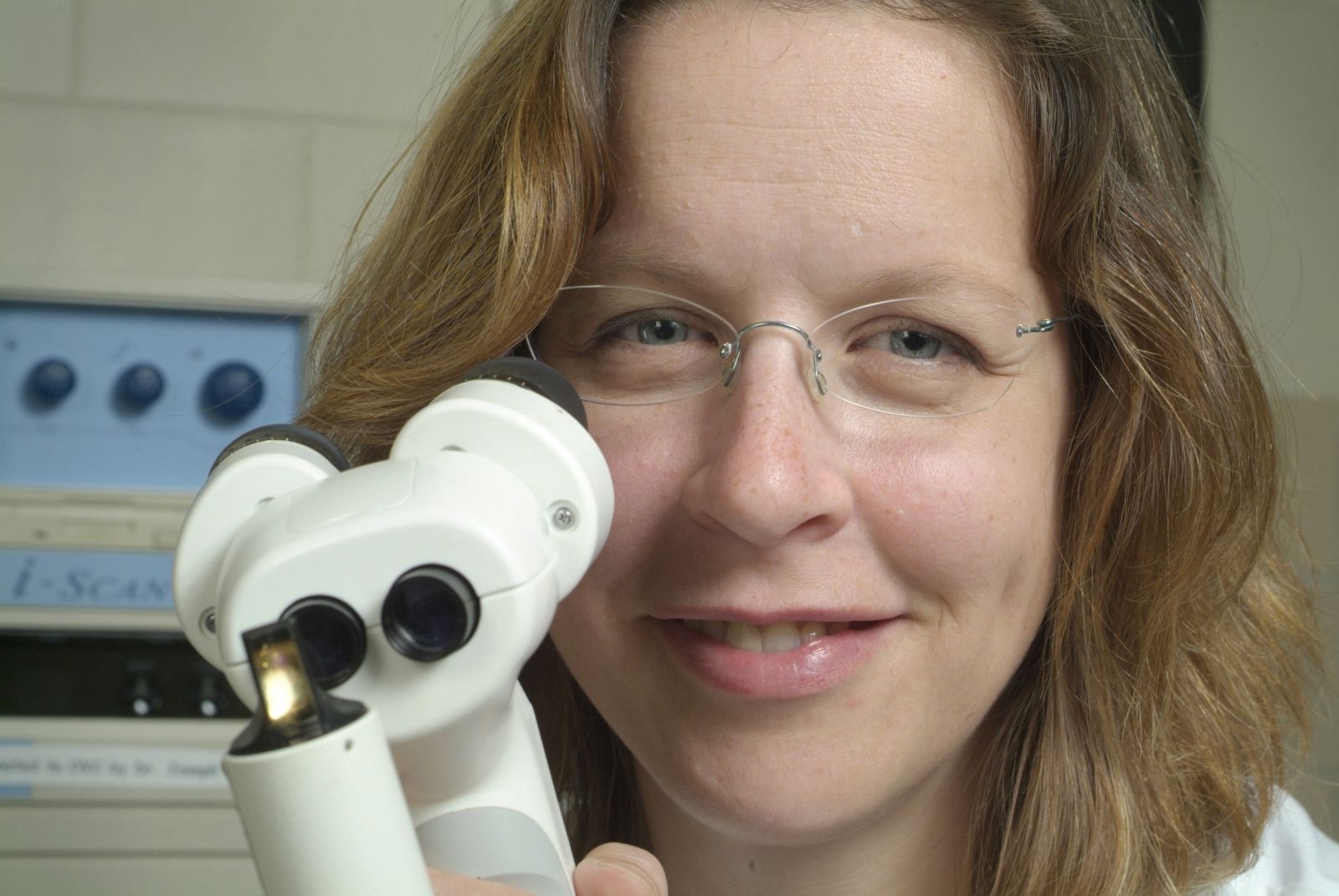
Dr. Chantale Pinard
An electroretinogram, an eye test used to detect abnormal function of the retina, and ultra sound determined Steve would be a good candidate for cataract surgery in his left eye; however, tests were not conclusive that the right eye would be visual once the cataract was removed. It was decided that cataract surgery would first be performed on the left eye, and if Steve was stable enough, the procedure would then be performed on the right eye. Steve would already be under general anesthesia and Pinard was hopeful the cataract removal, even with a less functional retina, could still restore some vision.
“In my experience, dogs can do quite well and have a very good quality of life despite loss of vision,” Pinard says. “However there is certainly a group of dogs that, like Steve, do better with vision due to less anxiety and more sense of stimulation,”
Steve’s bilateral cataract surgery took place on September 28, 2015. Cataract surgery is the same in dogs as it is in people and the procedure takes approximately 30 to 45 minutes per eye, Dr. Pinard explains. JP documented Steve’s journey on his Instagram account – from a 90-day countdown to his surgery date, to the first time Steve was able to track a tennis ball with his eyes following surgery.
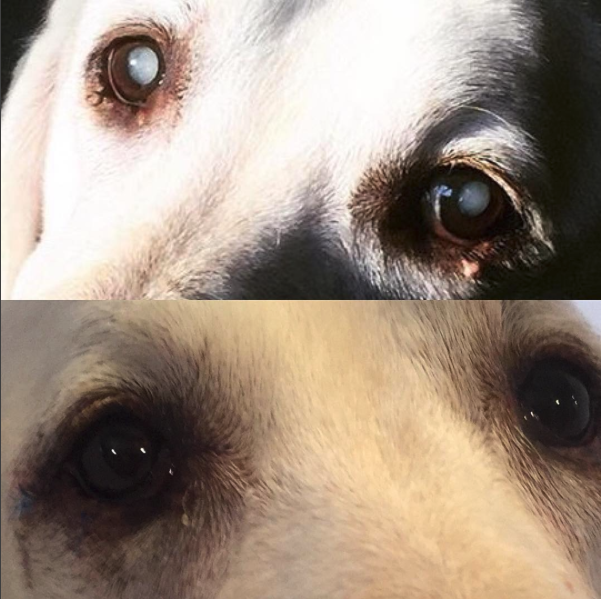
From JP’s Instagram account (@cdnparamedic13):
“It’s so amazing to watch him [Steve] learn how to see again!”
Steve’s post operative regimen includes eye drops to decrease inflammation in his eyes and to stimulate tear production, as Diabetic dogs are known to have dry eye syndrome. The artificial lens in his left eye has restored functional vision in that eye, while the sight in his right eye is limited to high contrast objects or shadows, due to scarring of the retina discovered during surgery. Since Steve is an insulin-dependent diabetic dog, he requires one needle twice a day – after breakfast and dinner, something that JP and Dawn Marie are comfortable administering.
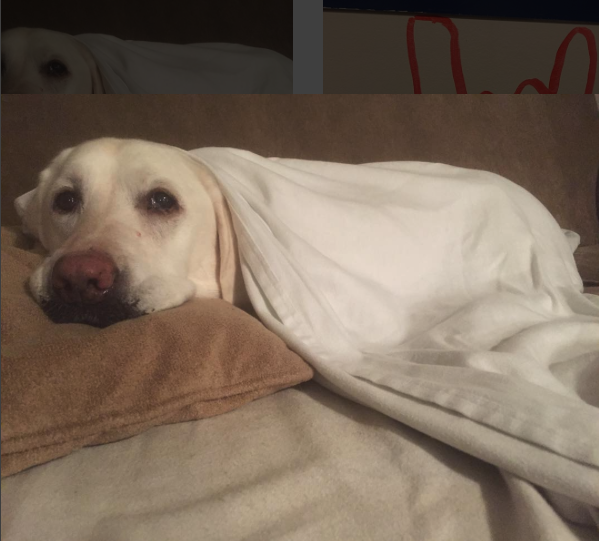
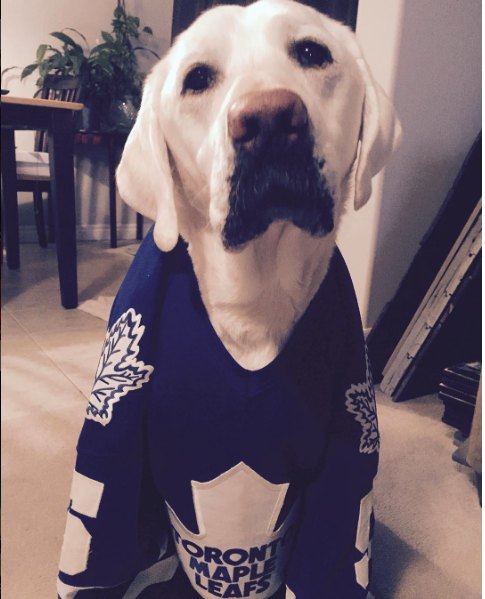
Steve enjoying life back at home post-op
While Steve will require ongoing appointments every few months to monitor his eye pressure and healing, he has gained muscle mass with increased physical activity and he’s been getting back to his old self.
“I can’t thank Dr. Pinard and the OVC enough for everything they did for Steve,” JP says. “They gave me my best friend back.”
Follow Steve’s journey on Instagram with the hashtags #SteveTheBlindLab and #SteveTheOneEyedLab.
Dr. Chantale Pinard is an OVC Pet Trust funded researcher.

